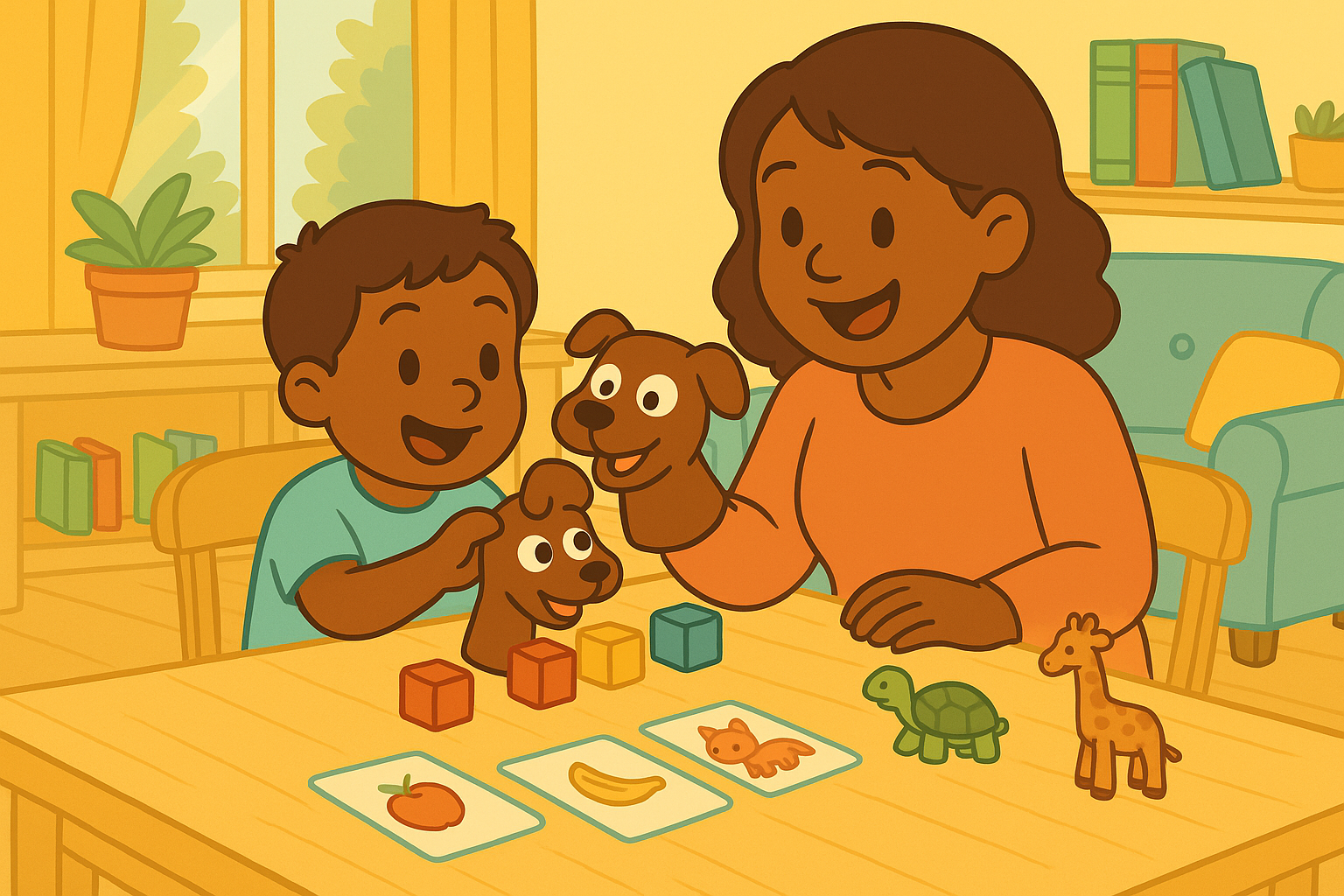How to Use Props and Puppets to Teach Concepts
How to Use Props and Puppets to Teach Concepts
Why Props and Puppets Work So Well
Puppets and props instantly transform learning because they:
capture attention,
lower pressure,
activate imagination,
model language safely,
and build emotional connection.
Children are far more willing to:
try new vocabulary,
practice problem-solving,
explore emotions,
and rehearse routines
…when the puppet is the one “struggling” or “learning.”
The Psychology Behind Puppet Power
When children speak through a puppet, something magical happens:
Their brain experiences reduced performance anxiety.
They take more academic risks.
They practice self-regulation playfully.
They externalize emotions safely.
Occupational therapists, speech therapists, and teachers have used puppets for decades — because they work.
(Try this too: The Power of Naming Emotions in Early Learning)
Step 1: Pick the Right Puppet or Prop
Don’t overthink it. Useful props include:
stuffed animals,
spoons with eyes drawn on,
socks with marker faces,
favorite toys.
If it has personality, it works.
Choose puppets with:
✅ expressive features
✅ soft bodies (comforting)
✅ visible mouths (great for speech modeling)
Step 2: Let the Puppet “Ask” Questions
Children hesitate less when the puppet is curious.
Try:
“The puppet wants to know… how many blocks tall this tower is!”
Or:
“The puppet forgot — what day is it?”
This shifts pressure away from the child and onto play.
(Related read: Storytelling Games That Spark Imagination)
Step 3: Use Props to Model New Vocabulary
Words stick when they are:
embodied,
paired with gestures,
attached to props.
Example: Teaching positional words
Place a toy under, behind, next to objects.
Ask: “Where did the bunny go?”
Children connect meaning through movement.
(See also: Teaching Directional Words Through Movement)
Step 4: Teach Social Skills With Puppet Scenarios
Puppets can:
interrupt,
forget to share,
ask for a turn,
feel frustrated,
solve conflict.
You can create safe rehearsal spaces:
“The puppet grabbed! What should we say?”
Kids learn scripts without personal exposure.
Step 5: Introduce Academic Concepts Through Props
Math props
toy cars for counting,
cereal loops for patterns,
blocks for measuring height.
Literacy props
letter magnets,
picture cards,
puppets that “eat” only certain letters.
Science props
magnifying glasses,
toy animals,
color filters.
Concrete objects make abstract ideas visible.
(Related read: Teaching Science Through Sensory Exploration)
Step 6: Support Emotional Regulation
Props can “show” big feelings:
trembling paws for nervousness,
drooping ears for sadness,
bouncing feet for excitement.
Then you can ask:
“What can we do to help the puppet feel calm?”
Kids practice empathy and soothing strategies indirectly.
Step 7: Prompt Sequencing and Memory
Give your puppet a funny “bad memory”:
“I remember the first step… but what’s next?”
Children love “teaching” the puppet — and strengthen sequencing skills while they’re at it.
(Related read: Building Memory Skills Through Movement Games)
Step 8: Let Kids Become the Teacher
When children teach:
vocabulary sticks,
confidence rises,
language skills expand,
executive function sharpens.
Ask:
“Can you show the puppet how to sort these blocks?”
Teaching = mastery.
Step 9: Use Props To Anchor Routines
Props can:
introduce transitions,
reduce overwhelm,
cue upcoming events.
Try:
a “toothbrush puppet” for brushing,
a “sock puppet” for getting dressed,
a “cleanup bell” to signal tidy time.
Routines stick when anchored through play.
Step 10: Build Puppets Into Story Retelling
Story retelling builds:
comprehension,
sequencing,
inference,
vocabulary.
Let puppets become characters:
“What happened first? Then what did the puppy do?”
Suddenly comprehension becomes performance.
When to Use Puppets
They shine when:
✅ introducing new concepts
✅ practicing tricky social behaviors
✅ easing transitions
✅ encouraging participation
✅ calming strong emotions
When NOT to Use Puppets
Avoid puppets if your child:
🚫 seems overstimulated
🚫 feels puppets are “babyish”
🚫 expresses fear
Follow interest — not obligation.
Fuzzigram’s Favorite Prop & Puppet Activities
✅ Puppet hide-and-seek (positional words)
✅ Emotion puppet check-ins
✅ Story retelling with stuffed animals
✅ Math snack shop (counting + coins)
✅ Letter-eating puppet (phonics fun)
This content is for educational purposes and is not a substitute for professional medical or psychological advice.
Popular Parenting Articles




